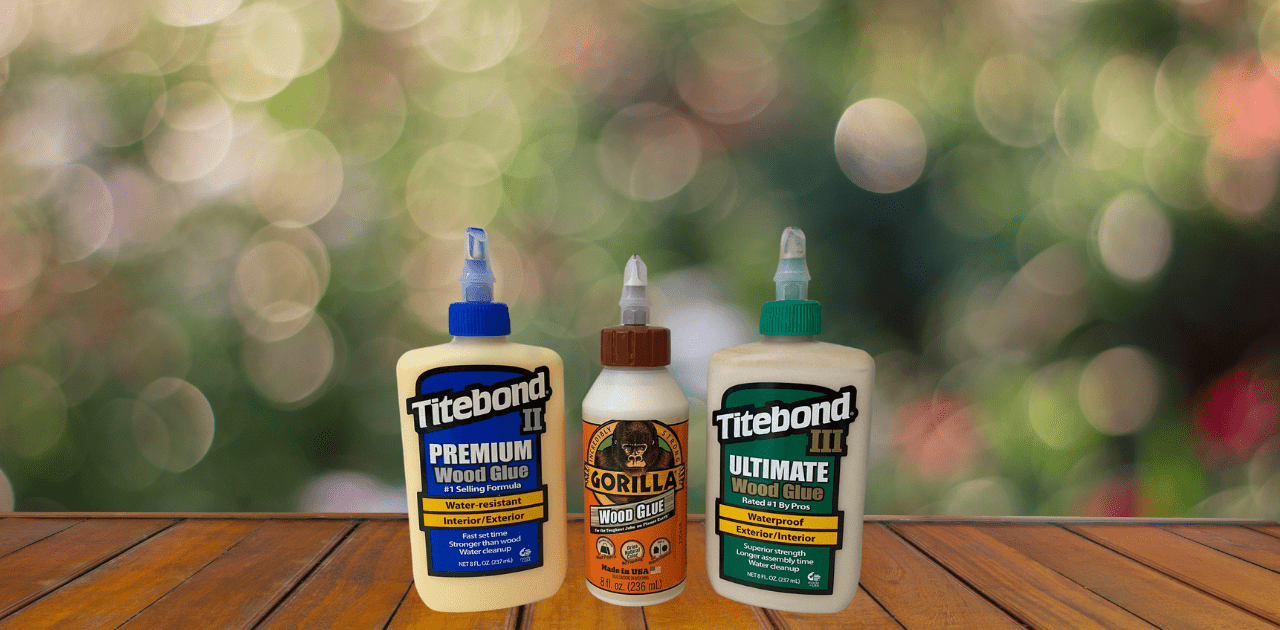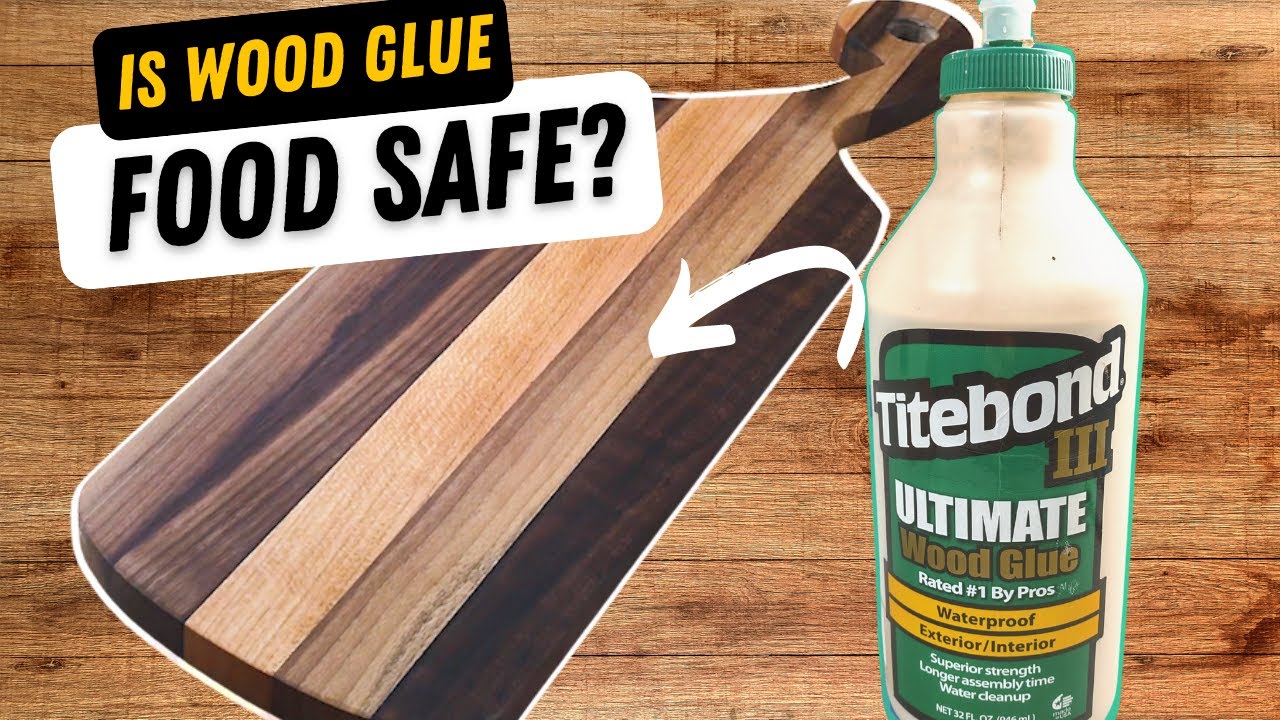Is wood glue safe? If you’re a young DIY enthusiast or just curious about woodworking, you’ve probably wondered about the safety of using wood glue. Well, my friend, you’ve come to the right place! In this article, we’ll dive into this question and explore whether wood glue is a safe option for your projects. So, let’s get started and find out if wood glue is the right choice for you!
You’ve got your tools ready, your wood pieces cut and sanded, and now it’s time to assemble your masterpiece. But before you reach for that bottle of wood glue, it’s essential to understand if it’s safe to use. We’ll explore what wood glue is made of and whether it poses any risks to your health or the environment. By the end, you’ll have a clear answer to the question, “Is wood glue safe?”
Now, safety is a top priority, and it’s crucial to know if using wood glue can be harmful to you or the world around you. In this article, we’ll discuss some precautions you can take while working with wood glue to ensure a safe and enjoyable experience. So, without further ado, let’s jump right in and uncover the truth about wood glue safety!
When it comes to woodworking projects, safety is crucial. Wood glue is generally safe to use if you follow proper handling and safety precautions. It is non-toxic and doesn’t release harmful fumes once dried. However, it’s essential to wear protective gloves and ensure proper ventilation when using wood glue. Always read the manufacturer’s instructions for specific safety guidelines. Remember, practicing good safety measures is key to enjoying your woodworking projects without any worries.

Is Wood Glue Safe? Exploring the Safety and Benefits of Wood Glue
Wood glue is a commonly used adhesive in woodworking projects, but many people wonder about its safety. In this article, we will delve into the topic of whether wood glue is safe to use. We will explore the potential health risks, the safety precautions to take, and the benefits of using wood glue in your woodworking projects. So, let’s get started and address the concerns surrounding wood glue.
Understanding Wood Glue and its Composition
Wood glue, also known as carpenter’s glue or adhesive, is a type of adhesive specifically formulated for bonding wood. The main component of wood glue is polyvinyl acetate (PVA), a synthetic polymer that forms a strong bond when it dries. PVA is commonly used in a range of applications due to its non-toxic nature.
When wood glue is applied to surfaces, it penetrates the porous wood fibers and forms a secure bond as it cures. Once fully dried, the bond created by wood glue is typically stronger than the wood itself. This makes it an ideal adhesive for woodworking projects, as it provides excellent strength and durability.
Benefits of Wood Glue in Woodworking Projects
Wood glue offers several benefits that make it a popular choice for woodworking projects. Let’s take a look at some of these benefits:
1. Strong and Durable Bonds: Wood glue creates strong and durable bonds, ensuring that your woodworking projects withstand the test of time.
2. Easy Application: Wood glue is easy to apply, whether you’re working with large or small pieces of wood. Its liquid form allows for precise application and even distribution.
3. Versatile: Wood glue can be used on various types of wood, such as softwoods, hardwoods, and plywood. It is also suitable for bonding other materials like MDF (medium-density fiberboard) and particleboard.
4. Convenient Cleanup: Wood glue is water-based, making it easy to clean up with just soap and water. This is especially advantageous when working with children or in a confined space.
Health Concerns Associated with Wood Glue
While wood glue is generally considered safe for use, it is essential to take certain precautions to ensure your safety. Here are some potential health concerns associated with wood glue:
1. Skin Irritation: Prolonged or repeated contact with wood glue can cause skin irritation in some individuals. It is advisable to wear gloves when handling wood glue to minimize the risk of skin-related issues.
2. Eye Irritation: Wood glue can cause eye irritation if it comes into contact with the eyes. It is crucial to wear protective eyewear when working with wood glue to prevent any accidental splashes.
3. Inhalation of Vapors: Wood glue emits vapors as it cures, which can cause respiratory irritation if inhaled in large quantities or in poorly ventilated areas. It is recommended to use wood glue in a well-ventilated space or wear a respirator mask if necessary.
It is important to follow the manufacturer’s instructions and safety guidelines when using wood glue to minimize any potential health risks. If you experience any adverse reactions or discomfort while working with wood glue, seek medical attention immediately.
Safety Tips for Working with Wood Glue
To ensure your safety when using wood glue, here are some essential safety tips to keep in mind:
1. Read the instructions: Carefully read and follow the instructions provided by the manufacturer. This will help you understand any specific safety precautions and ensure proper application.
2. Use in a well-ventilated area: Always work in a well-ventilated space to avoid inhaling excessive fumes. Open windows or use fans to improve airflow.
3. Wear protective gear: Protect your skin by wearing gloves and your eyes by using safety goggles. This will minimize the risk of skin and eye irritation.
4. Avoid ingestion: Wood glue should not be ingested, as it can be harmful if swallowed. Keep wood glue out of reach of children and pets.
5. Cleanup promptly: Clean up any excess glue or spills immediately using a damp cloth or sponge. This will prevent accidental contact and ensure a safe working environment.
By following these safety tips, you can enjoy the benefits of wood glue while minimizing any potential health risks.
Additional Tips for Using Wood Glue
Now that we have addressed the safety concerns surrounding wood glue let’s explore some additional tips for using wood glue effectively:
1. Proper Surface Preparation
To achieve strong bonds, it is crucial to properly prepare the surfaces before applying wood glue. Ensure that the surfaces are clean, dry, and free from dust and debris. Sanding the surfaces can help create a better bond by increasing the contact area.
2. Apply Sufficient Glue
Apply a generous amount of wood glue to both surfaces being bonded. Make sure to spread the glue evenly and cover the entire surface. Using too little glue can result in weak bonds, compromising the overall durability of your woodworking project.
3. Clamp and Allow Sufficient Drying Time
After applying the wood glue, clamp the pieces together firmly. This will help ensure even pressure and a tight bond. Allow the glue to dry completely before removing the clamps. The drying time can vary depending on the specific wood glue used, so refer to the manufacturer’s instructions for guidance.
Conclusion
In conclusion, wood glue is generally safe to use in woodworking projects. It offers numerous benefits, including strong and durable bonds, easy application, and versatility. However, it is important to take certain safety precautions, such as wearing protective gear and working in a well-ventilated area. By following these guidelines and using wood glue correctly, you can enjoy its advantages while minimizing any potential health risks. Remember to read and follow the manufacturer’s instructions for the specific wood glue you are using, as different products may have varying recommendations. So go ahead and use wood glue with confidence in your woodworking projects.
Key Takeaways: Is Wood Glue Safe?
- Wood glue is generally considered safe for use.
- It is non-toxic and does not release harmful fumes.
- However, it is important to follow safety instructions when using wood glue.
- Be sure to use wood glue in a well-ventilated area.
- Wear protective gloves and avoid contact with skin and eyes.
Frequently Asked Questions
Wood glue is a common adhesive used in woodworking projects. If you’re wondering about the safety of using wood glue, we’ve got you covered. Take a look at these frequently asked questions to learn more:
1. How safe is wood glue for indoor projects?
When used properly, wood glue is generally safe for indoor projects. Most wood glues are non-toxic, meaning they won’t release harmful fumes or pose a health risk. However, it’s important to use wood glue in a well-ventilated area and follow the manufacturer’s instructions to ensure proper safety.
If you have concerns about allergies or sensitivities, it’s a good idea to wear gloves during the application process. Additionally, keep in mind that some additives in specific wood glues may cause skin irritation in sensitive individuals. If you experience any adverse reactions, discontinue use and seek medical advice.
2. Can wood glue be harmful if ingested?
Ingesting wood glue is generally not recommended and can be harmful. Even though most wood glues are non-toxic once they are dry, swallowing wood glue in its liquid state can cause digestive discomfort and irritation. It’s important to keep wood glue out of the reach of children and pets to prevent accidental ingestion.
If you or someone else accidentally ingests wood glue, it’s crucial to seek immediate medical attention. Be sure to have the product container or label on hand to provide details to healthcare professionals.
3. Is wood glue safe for use around food or utensils?
No, wood glue is not safe for use around food or utensils. Wood glue is not designed to be ingested or come into direct contact with food. It’s essential to keep wood glue away from surfaces where it may come into contact with food or areas where utensils are used to avoid any potential contamination.
Instead, consider using food-safe adhesives specifically designed for repairs or projects involving food utensils or surfaces. These adhesives are formulated to meet specific safety standards and can be used with confidence in those settings.
4. Can wood glue cause allergies or skin reactions?
While wood glue is generally safe to use, some individuals may be allergic or more sensitive to certain components in the adhesive. If you have a history of allergies or skin reactions, it is recommended to wear gloves and protective clothing when handling wood glue.
If you experience any skin irritation or allergic reactions after using wood glue, discontinue use immediately and consult a healthcare professional. It’s always better to take precautions and protect your skin to avoid any potential adverse reactions.
5. What safety precautions should I take when using wood glue?
When working with wood glue, it’s important to prioritize safety. Here are some key precautions to keep in mind:
– Work in a well-ventilated area to avoid inhaling excess fumes.
– Use gloves to protect your skin, especially if you have sensitive skin or a history of allergies.
– Read and follow the manufacturer’s instructions for proper usage and drying time.
– Keep wood glue out of reach of children and pets to prevent accidental ingestion.
By following these safety precautions, you can ensure a safe and successful woodworking experience with wood glue.

Is wood glue safe on the jointer?
Summary
So, is wood glue safe? Well, it depends on how you use it.
Wood glue can be safe to use as long as you follow some basic safety precautions. Make sure to read the label, use it in a well-ventilated area, and avoid direct contact with your skin. If you accidentally get glue on your skin, wash it off right away.
Remember, always ask an adult for help when using wood glue, and never use it in a way that could be harmful, like sniffing it or ingesting it. Just use it for its intended purpose of joining pieces of wood together, and you should be good to go!
